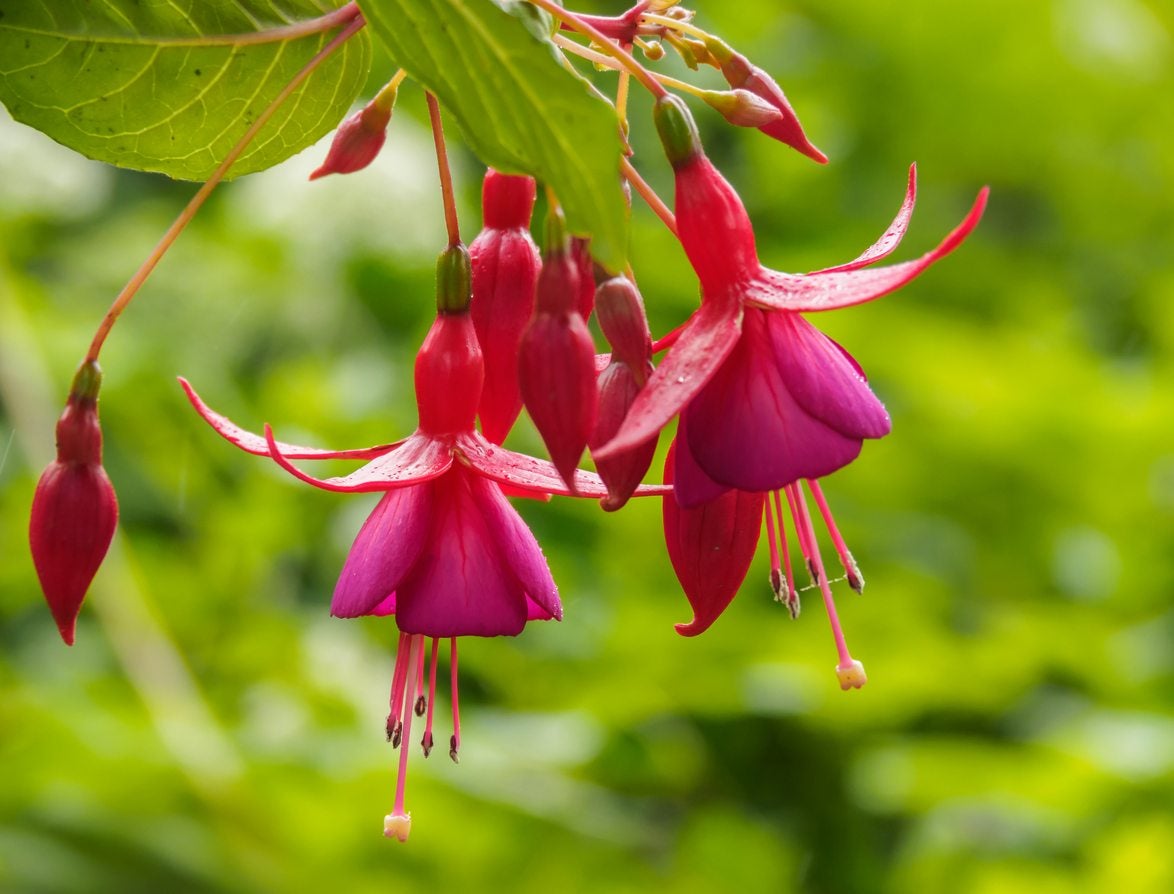Are Fuchsias Edible: Learn About Eating Fuchsia Berries And Flowers


You may have a curious toddler or a mouthy pooch who finds grazing in the garden a delight. However, consider that many of the plants we have in our landscapes are not edible and may, in fact, be poisonous. Just because a fuchsia produces berry-like fruits, for instance, may not mean they can be eaten. Are fuchsias edible? We'll go into that and a bunch of other fun facts about the fuchsia plant in this article.
Can You Eat Fuchsia?
The French monk and botanist Charles Plumier discovered fuchsia on the island of Hispaniola in the late 1600's. It was apparent to the natives at the time that there was no fuchsia plant toxicity, and Plumier wrote a great deal on the flavor and medicinal uses of the plant. There are now over 100 species of this versatile flowering plant, which are spread in the warmer Americas and into New Zealand. There are countless varieties of fruits, both wild and cultivated. Many of these are edible and actually delicious while others are not tasty but effective medicine or high in nutrients. Ominously still, others are actually toxic or poisonous and serious illness or death can result after ingestion. Are fuchsias edible? This is a valid question, as the deeply purple berries appear to be some sort of juicy, tangy, sweet delicacy. In fact, all fuchsia fruit are edible and you can eat the flowers too. By all accounts, the berries are lightly tart with lemony freshness. Some foodies compare them to stoneless cherries. Either way, they are not toxic and can be eaten in a variety of ways.
Harvesting Berries and Flowers
Since we have established there is no fuchsia plant toxicity, it is safe to gather some berries and/or flowers and try them out. Berries often arrive towards the end of the summer, usually as the plant is still flowering. The effect is decorative and unique. Since plants keep flowering during fruiting, you can harvest berries at any time. Berries should be plump, smooth, and fairly easy to twist off the stem. Alternatively, you can use scissors to snip them off. Wash the fruit and prepare it as you would like. The flowers are also edible. Harvest when fully open. Use the petals as a salad, garnish, or frozen inside ice cubes for a pretty party drink. Eating fuchsia berries and flowers adds Vitamin C and many other nutrients to the table while brightening up all your dishes. One of the more popular things to do with the berries is to make it into a spreadable jam. The method is the same as most other berry jams. You can also bake them into scones, muffins, cakes, and more. Top them over pancakes or ice cream or add them to a fruit salad. Their mildly tart-sweet flavor brightens up meat dishes as a chutney. They also are great for just eating out of hand as a gardener's handy snack. Take care of your plants and they will take care of you. Make sure your fuchsia plant is in part sun where the roots can stay cool. Feed with a high potash fertilizer in spring to increase flowers and, of course, fruits. If your plant is hardy, prune it lightly in late winter. If you have the tender variety, try bringing it indoors to overwinter. With a little effort, many of the varieties of fuchsia can produce fruit for your home for years.
Sign up for the Gardening Know How newsletter today and receive a free copy of our e-book "How to Grow Delicious Tomatoes".

Bonnie Grant is a professional landscaper with a Certification in Urban Gardening. She has been gardening and writing for 15 years. A former professional chef, she has a passion for edible landscaping.